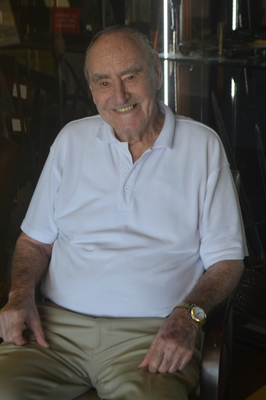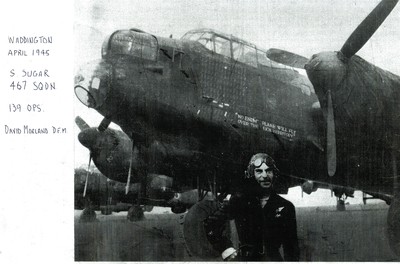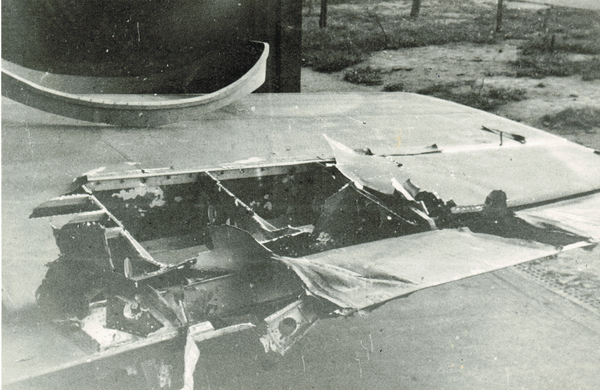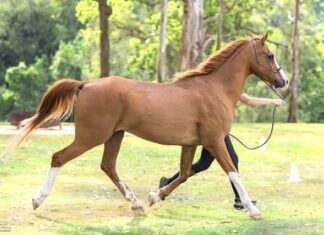By KATIE DE VERTEUIL
NOOSA local and World War II veteran David Morland has been passionate about flying for as long as he can remember.
Indeed he first hit the skies as a young boy back in 1935 – a memory he can easily recall.
“I was a member of the young Australia league, and we were in Sydney and for five shillings we were able to do a joyflight,” David said.
“I was 10 years of age and the older boys virtually elbowed me away from windows the whole time.”
Fast forward eight years and David was flying in very different conditions, as an air-gunner with the Royal Australian Air Force (RAAF) during World War II.
Aged 18 at the time, David enlisted into the RAAF in February 1943.
After ITS at Bradfield Park and Gunnery School at Port Pirie, he was posted to the UK via Wellington bombers, which included a leaflet dropping run from Abbeville to Amiens prior to the Normandy landings.
Then it was onto HCCU at Swinderby on Stirlings, and LFU at Syerston on Five Group (Special Duties) Bomber Command based at Waddington.
This particular squadron from its first operation on 2 January 1943 to its last on 26 April 1945 was awarded five distinguished service orders (DSOs); 146 Distinguished Flying Crosses (DFCs) , two Conspicious Gallantry Medals (CGM’s) and 36 Distinguished Flying Medals (DFMs).
These achievements however came at a high cost, with 590 aircrew killed in action, 117 having become prisoners of war, and 84 who were shot down and evaded capture.
Of the seven commanding officers, five were killed in action.
David was one of the few who returned home safely, no wounds or scars to his name. At least nothing physical.
“Our role was to get the aircraft there and back and have a safe crew, with the job of working as a team together to drop bombs on the enemy,” David said.“We were told we would probably last four trips and that would be finished.
“That was the statistic for Bomber Command – the losses were pretty high so you made every day count.”
Because of such tragic odds, crew members tended to keep to themselves, rather than mingle too much with others.
“When you were training you played cards and chess with everyone and you laughed and joked and so on, but when you got to the squadron you ran into like a brick wall,” David said.
“Which was fairly difficult for an outsider to understand, but after you’d been there and done a few trips yourself, you knew that the chaps that you were talking to wouldn’t be there tomorrow, so you imploded on your own crew and the seven of you lived together, talked together, drank together and we became very insular in that way.
“It was a survival technique I guess.
“What was the good of talking to people and becoming mates to then feel a sense of loss when they did not return?
“It was better not to know him. If he remained a stranger then it didn’t matter.”
David said the men were extremely grateful for the nine days’ leave each crew had every six weeks to “restore one’s sanity a little bit.”
David was dispatched from his duties in September of 1945.
He was at the headquarters of Southern Command at the time the war ended and acquired quick release to civil life.
He returned to the Postmaster-General’s department, personnel division, in charge of a new rehabilitation section for the 3000 PMG employees coming out of the three services.
In 1946 David was selected as one of 60 RAAF personnel under W/C Rollo Kingsford Smith for the 250 strong Australian victory contingent travelling to the UK.
This was an honour that David remains proud of to this day. Like many returned soldiers David took to the drink to tame the brutal memories of what he had just experienced.
“When I returned from war I drank a lot which worried my parents and that went on for quite a while until the lady who became my wife said it was her or the drink so I gave up the drink and didn’t drink again for 10 years,” David said.
He and Margaret Jean Connor (“Peg”) married in 1948. Together they have three daughters and three grandsons.
The family moved to Tewantin in 1989. While Peg has since passed away, David remains an active resident in the Tewantin community.
A loyal member of Tewantin-Noosa RSL sub-branch, David will be proudly marching in Saturday’s Anzac commemorations.









